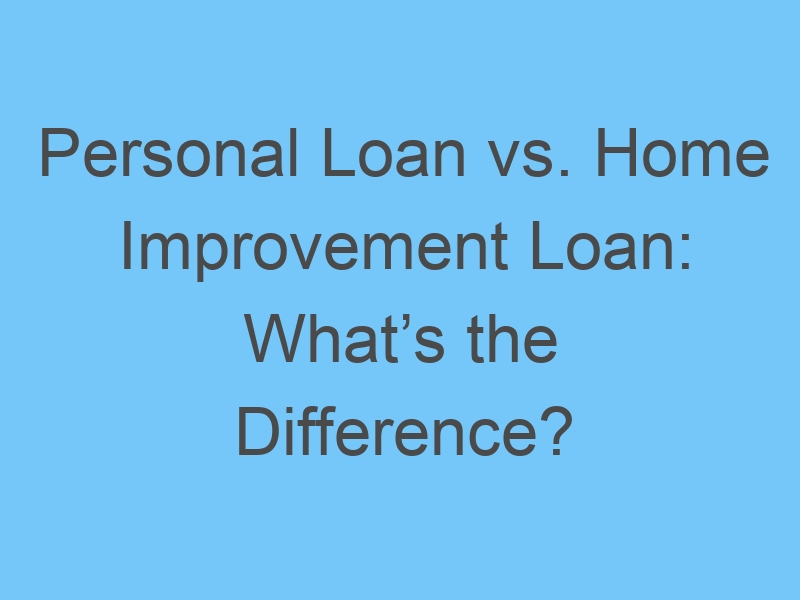
Personal Loan vs. Home Improvement Loan: What’s the Difference?
Personal loans and home improvement loans are two types of financing options that individuals can use for various purposes, including funding home improvement projects. However, there are some key differences between these two types of loans:
Personal Loan:
- Purpose: A personal loan is a general-purpose loan that can be used for a variety of purposes, including home improvements. It can also be used for debt consolidation, medical expenses, travel, or any other personal need.
- Collateral: Personal loans are typically unsecured, meaning they don’t require collateral. This means you don’t need to put up your home or other assets as security for the loan.
- Loan Amount: Personal loan amounts can vary based on your creditworthiness, income, and the lender’s policies. They are often available in smaller amounts compared to home improvement loans.
- Interest Rates: Personal loan interest rates are determined by your credit score, income, and other financial factors. Rates can be fixed or variable.
- Loan Term: Personal loan terms typically range from one to seven years, although they can vary by lender. Shorter loan terms may result in higher monthly payments but lower overall interest costs.
- Flexibility: Personal loans offer flexibility in terms of how you use the funds. You’re not restricted to spending the loan amount solely on home improvements.
Home Improvement Loan:
- Purpose: A home improvement loan is specifically designed to fund renovations, repairs, and upgrades to your home. It is intended to be used for home-related projects and improvements.
- Collateral: Depending on the type of home improvement loan, collateral might be required. Some home improvement loans, such as home equity loans and HELOCs (Home Equity Lines of Credit), use your home as collateral.
- Loan Amount: Home improvement loan amounts can vary based on the type of loan and the lender. Home equity loans and HELOCs are often used for larger projects.
- Interest Rates: Interest rates for home improvement loans can vary depending on the type of loan and your creditworthiness. For loans that use your home as collateral, rates may be lower compared to unsecured personal loans.
- Loan Term: Loan terms for home improvement loans can vary, but they are often longer than those for personal loans. Home equity loans and HELOCs may have terms ranging from five to 30 years.
- Tax Benefits: In some cases, the interest paid on a home equity loan or HELOC used for home improvements may be tax-deductible. However, tax laws can change, so it’s important to consult a tax professional for the most up-to-date information.
When deciding between a personal loan and a home improvement loan, consider your specific needs, financial situation, and the nature of the project. If the project is related to your home, a home improvement loan might offer more favorable terms. However, if you’re looking for a more flexible loan option without using your home as collateral, a personal loan could be a suitable choice. It’s important to compare offers from different lenders, review terms and rates, and choose the option that aligns with your goals and budget.

Dr Clara Lee is specializes in aesthetic/cosmetic plastic surgery of the face, nose, breast and body, and is considered one of the best facial plastic surgeons in the world. MD, FACS, is highly qualified and experienced in the field of plastic surgery and aesthetic care and has performed over 10,000 surgical procedures.
About
Dr. Clara Lee couples his outstanding professional credentials and ethics with a personalized approach to patient care and a keen eye for aesthetic beauty.
Specialties: plastic surgeon, plastic surgery
by Clara Lee
Reviewed by Clara Lee
approved by Dr Clara Lee
Leave a Reply